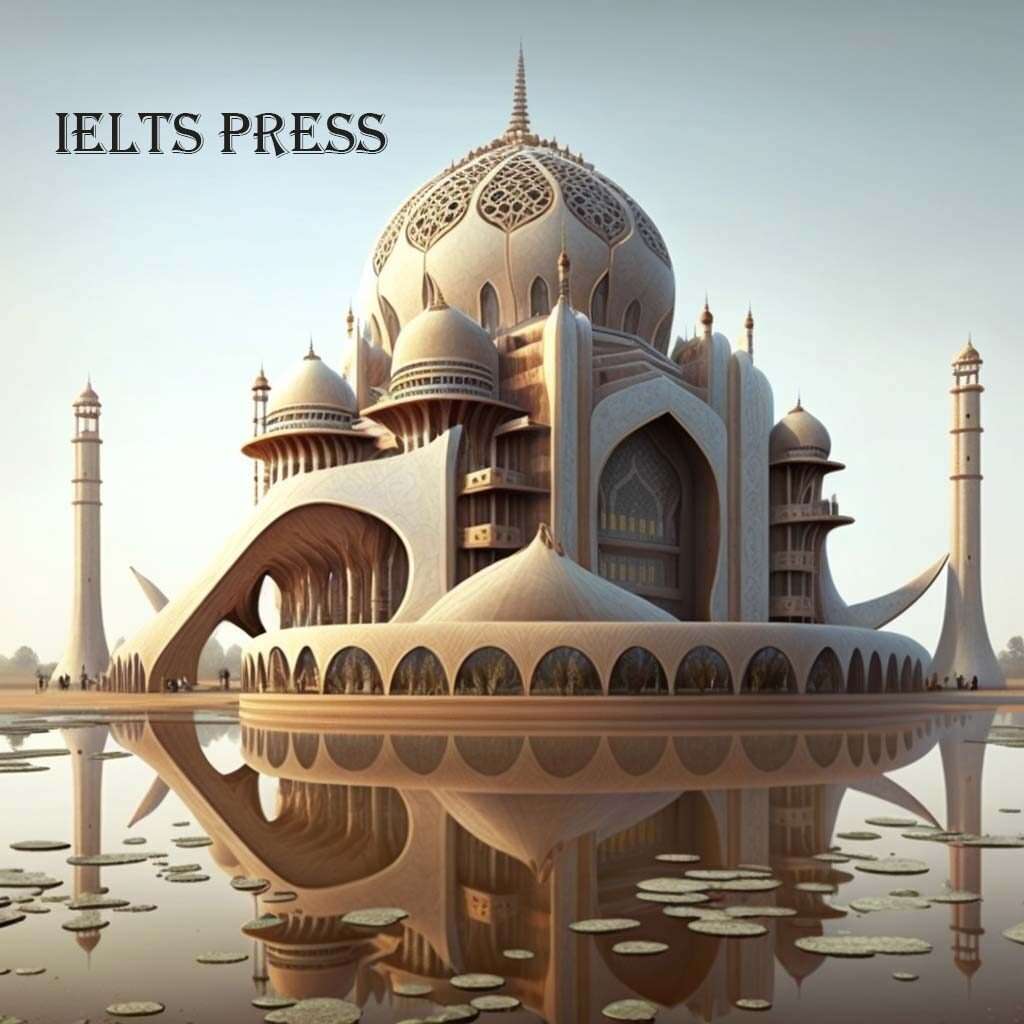- Architectural Building
IELTS Cue Card Speaking Part 2 with Sample Answer:

Describe a building/structure with architectural interest.
You should say:
- what is it
- what is the historical and architectural significance of it
- why you think it should be preserved
and describe the building/structure.
Sample Answer, C1 English Level, Advanced, Band Score 6.5-7.5
One of the most impressive structures I have ever seen is the Taj Mahal, located in Agra, India. This magnificent building is a mausoleum constructed in the 17th century by the Mughal emperor Shah Jahan to honor the memory of his beloved wife, Mumtaz Mahal, who passed away giving birth to their fourteenth child.
The Taj Mahal is widely regarded as one of the world’s most significant examples of Mughal architecture, combining elements of Persian, Turkish, and Indian styles. The building’s intricate marble façade is adorned with exquisite floral designs and calligraphy, making it an unparalleled masterpiece of artistic and architectural achievement.
The Taj Mahal’s historical significance is evident not only in its cultural and religious significance but also in its role as a symbol of love and devotion. This building is a testament to the extraordinary love between Shah Jahan and his wife, and its enduring beauty has attracted millions of visitors from around the world.
Preserving the Taj Mahal is of utmost importance for both cultural and historical reasons. This building is a symbol of India’s rich cultural heritage and has been recognized as a UNESCO World Heritage Site. Furthermore, it serves as a poignant reminder of the Mughal era and the contributions of this great civilization to human history.
Overall, the Taj Mahal is an extraordinary example of architectural and artistic excellence. Its historical and cultural significance, combined with its unparalleled beauty, make it a building that should be preserved for future generations to admire and appreciate.
The Taj Mahal is a very impressive building that I have seen before. It is located in Agra, India and was built in the 17th century by the Mughal emperor Shah Jahan to honor his wife Mumtaz Mahal, who died while giving birth to their fourteenth child.
Many people believe that the Taj Mahal is one of the most important examples of Mughal architecture in the world. It combines styles from Persia, Turkey, and India, and has intricate designs made of marble, flowers, and writing that show off its artistic and architectural achievements.
The Taj Mahal has historical and cultural importance because it represents love and devotion between Shah Jahan and his wife. It has attracted many visitors from different parts of the world because of its timeless beauty.
It is very important to keep the Taj Mahal preserved because it is a symbol of India’s rich cultural heritage and has been named a UNESCO World Heritage Site. It reminds us of the Mughal era and how this civilization contributed to human history.
All in all, the Taj Mahal is an incredible example of great architecture and art. Its cultural and historical importance, along with its beauty, mean that it should be preserved so that future generations can also appreciate it.
The Taj Mahal, situated in Agra, India, is undeniably one of the most remarkable edifices that I have ever laid eyes on. This stunning building was erected in the 17th century by Shah Jahan, a Mughal emperor, as a mausoleum for his cherished wife, Mumtaz Mahal, who had died giving birth to their fourteenth child.
The Taj Mahal is revered as one of the most important examples of Mughal architecture in the world, blending elements of Persian, Turkish, and Indian styles. The intricate marble exterior of the building is adorned with intricate floral designs and calligraphy, making it a masterpiece of artistic and architectural accomplishment that is unparalleled.
The Taj Mahal’s historical importance can be observed not only in its cultural and religious significance, but also in its portrayal of love and devotion. The edifice stands as a testament to the exceptional love between Shah Jahan and his wife, and its everlasting beauty has enticed millions of people from all over the world.
The preservation of the Taj Mahal is of paramount significance for cultural and historical reasons. This structure serves as an emblem of India’s rich cultural heritage and has been awarded the status of a UNESCO World Heritage Site. Moreover, it serves as a poignant reminder of the Mughal era and the contributions of this great civilization to human history.
Overall, the Taj Mahal is a remarkable illustration of architectural and artistic excellence. Its historical and cultural importance, coupled with its unparalleled beauty, make it an edifice that must be conserved for future generations to marvel at and appreciate.

